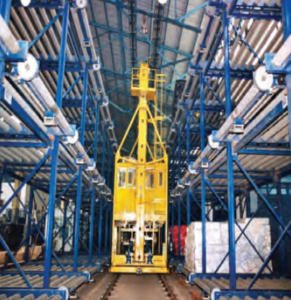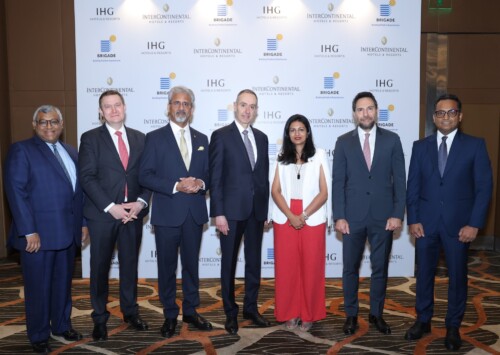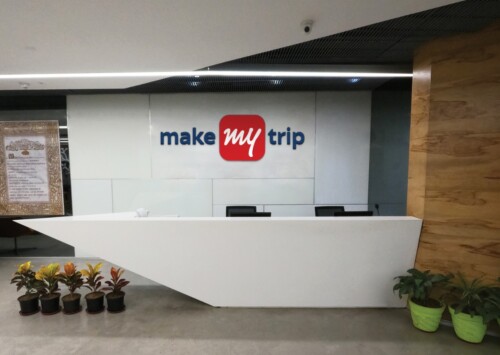AAI Turns to Moving Heavy Weights
AIBM
January-March 2017
The Airports Authority of India (AAI) is aiming at increasing the cargo volumes at its airports with a far-sight of benefitting related aviation sectors. Keeping the losses at bay and monetising from an increased cargo, the authority is looking at escalating cargo intakes at par with international airports.
The aviation sector in India is one of the fastest growing aviation markets today; it has seen a tremendous growth in air traffic over the last decade. To further boost the growth and to propel the industry, the Government of India recently released the National Civil Aviation Policy (NCAP) 2016. The NCAP 2016 is a step in the direction and promotion of air cargo as one of the major policy areas covered. With the NCAP, the government is also aiming to provide an ecosystem for the harmonised growth of various aviation sub sectors that include airlines, airports, cargo, aerospace manufacturing, skill development etc. Under the policy, one of the frameworks expected to ensure growth of air cargo business is the constitution of the Air Cargo Logistics Promotion Board (ACLPB). The ACLPB is looking at promoting growth in air cargo by means of cost reduction, efficiency improvement and better inter-ministerial coordination. The promotions of air cargo, both national and international, also come as part of the ‘Make in India’ campaign and have also been designed from an e-commerce and exports perspective.
From an increased air cargo, the benefits being sought after are aplenty. The revenue generated from air cargo will help airlines subsidise the cost of passenger tickets and thus take flying to the masses. Air cargo, particularly domestic, has a high employment potential, especially for the semi-skilled workforce. Within the air cargo ecosystem, Express Delivery Services (EDS) has a distinct operational nature and is becoming pivotal in light of double digit growth in e-commerce.
In order to bring the authority in line with internationally achieved norms, the need for special attention for speedy handling of cargo and reducing its dwell-time through cargo clearance round the clock needs to be ensured.
Projected growth benefits
With the opening-up of the Indian economy, there has been tremendous growth of air cargo at metro and non-metro airports with considerable scope for improvement in the basic infrastructure to tap the potential. The potential growth in air cargo movement across the country can be tapped if basic cargo facilities are created at second tier cities in India which can also work on Hub & Spoke theory essentially required for overall development of all regions in India. These steps come across as important as the airport development has a direct bearing on the accelerated development of the region and the backward areas get a boost in the process.
Work in Progress
It has been four decades since the AAI has been handling international cargo and storages. The authority has been successfully managing the Delhi, Mumbai, Chennai and Kolkata airports before JVCs (DIAL & MIAL) took over Delhi and Mumbai airports in 2006. Moreover, the AAI also has had many successes with its ventures in domestic cargo handling at Kolkata airport in the year 2008 followed by domestic cargo handling at Port Blair airport in 2010 under the AAI commercial policy.
As a pioneer, the AAI developed the concept of ‘air cargo terminal’ at several Indian airports. Furthermore, under the social mandate, the AAI developed and managed cargo terminals at the airports. The authority has also developed several ‘Common User Domestic-cum-Courier Terminals’ so as to facilitate the cargo growth by creating the basic cargo infrastructure as done for the passenger terminals by the AAI at second tier cities in India in the recent past.
Recently, AAI started launching cargo facilities in a full-fledged manner which can be termed as forward integration at far flung areas for the development of air cargo growth and facilitating the trade in the process. In fact, the AAI has successfully launched Commissioned Common User Domestic Air Cargo Terminals (CUDCT) at Chennai, Kolkata, Coimbatore, Port Blair, Jaipur, Lucknow (outbound only), Amritsar (interim), Bagdogra, Bhubaneswar, Madurai, Mangalore, Visakhapatnam, Indore, Raipur, Ahmedabad, Ranchi and Aurangabad airports and has planned to launch similar facilities at Goa, Guwahati, Vijayawada, Varanasi and Trivandrum airports during 2016-17 and at Pune, Amritsar, Surat and Srinagar airports, during the FY 2017-18.
All these initiatives are a result of the AAI’s idea of corporatisation of the authority and better organisation of air cargo so that certain unsuccessful attempts from past are not repeated like those at the Delhi and Mumbai airports. In order to be more successful at cargo handling, the AAI created state-of-the-art infrastructure and facilities. To further ponder upon the matter, and considering the importance of cargo handling and its impact on the economy of the country, the AAI appointed M/S RITES Ltd, to do a Staff working at custom appraisement area, Chennai airport comprehensive study on the various business models for air cargo around the world and suggest the way forward for the AAI to organise its cargo activity. Based on their recommendation, the AAI board took a pathbreaking decision of forming a fully-owned but an independent cargo subsidiary company by corporatisation of the AAI’s Cargo Department and christening it ‘AAI Cargo Logistics & Allied Services Company Limited’ (AAICLAS) in August, 2016. The AAICLAS was started with an authorised capital of INR 250 million to promote cargo at the AAI airports. A website and an app are the soft features that the AAICLAS provides.
AAICLAS has a long-term vision of becoming the foremost integrated logistics network operator in India with primary focus on air cargo handling and allied services. This new subsidiary will be allowed to develop its own distinct culture, organisation structure and business model while at the same time draw upon the strength of its large parent organisation. All activities currently being carried out by the cargo department of the AAI will be merged into the new company and the department will no longer be functioning within the AAI. Necessary steps will be taken by the AAI to ensure a smooth and hassle-free transfer of the activities to this new company. The company will focus on three verticals including air cargo handling and allied services, warehousing and contract logistics and air cargo road feeder and air freight stations.
To kick-start the functioning, infrastructure related to cargo handling like satellite freight cities with multi-modal transport, cargo terminals, cold storage, automatic storage and retrieval systems, mechanised transportation of cargo, computerisation and automation etc., need to be put in place. Such facilities would have to come up at smaller places too and for smoother functioning, the electronic data interchange systems will be developed and linked amongst all stakeholders in the trade. Creation of the AAICLAS will bring multiple advantages by taking care of a host of activities on the cargo front from the AAI in the period ahead. To get the work started, some positions of the highest officials have already been filled at the AAICLAS. The first managing director of the company is Neera Rawat, IPS; and the chief operating officer is Bimal Kishore Mehrotra.
The AAI already has a vast reservoir of human resources in cargo handling who possess the requisite expertise and experience in handling cargo operations which will be gainfully utilised for the organisational benefits. In addition, there is significant export and import potential in the Tier-II and Tier-III cities of the country. With the formation of this cargo subsidiary, the AAI would focus its attention on capturing the entire value chain at the AAI airports and provide ease of doing business to the importers and exporters of the states. The prospects for the AAICLAS long boom will be decided on the basis of reactions to three momentous opportunities – specific forces driving the next long boom, global catalysts and constraints. On all counts, the prospects for a long boom would fructify if inter-systems harmony and convergence were to reign.
It is being hoped that the efforts being made by the AAI in establishing regional connectivity through air cargo movement across the country would be ensuring easy access to all EXIM traders and thereupon would ensure overall air cargo growth. With proposed orders for induction of additional 500 aircraft to India’s fleet, domestic cargo capacity will further increase. As stakeholders, this calls for a holistic view by airports and airlines to move together to sustain the business by aligning their objectives with the vision of the government.











